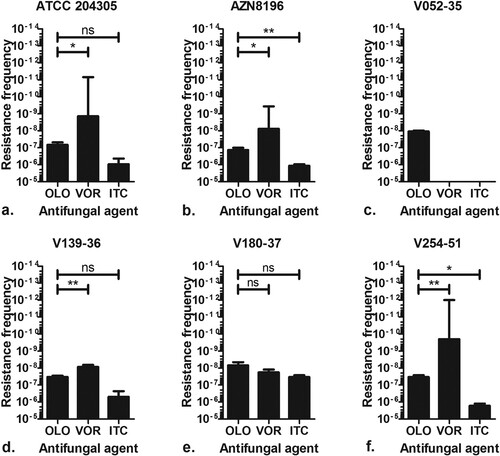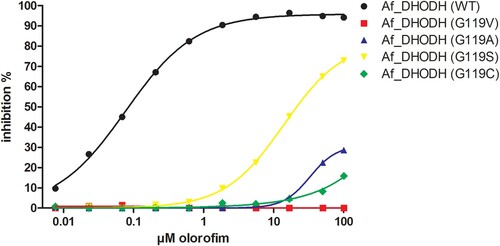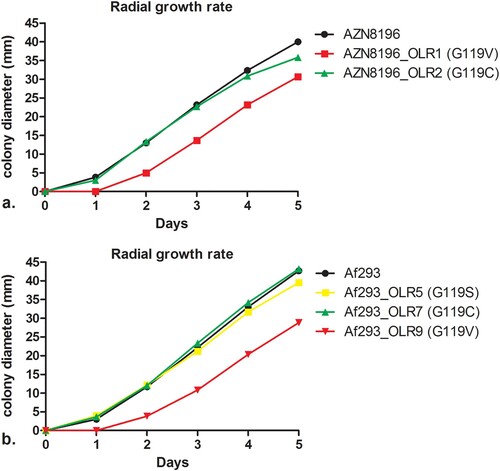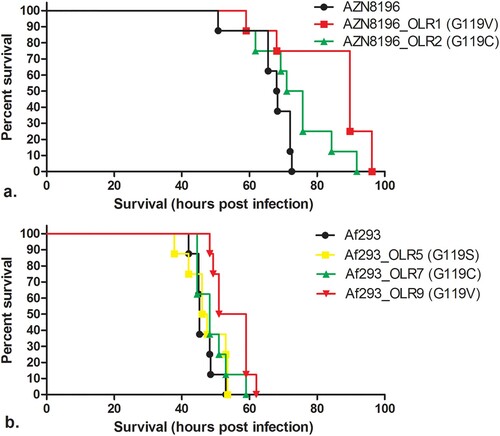Figures & data
Figure 1. Olorofim resistance frequency. Frequency of resistance observed of six A. fumigatus isolates when 106–109 spores were incubated on RPMI agar plates containing either 0.5 mg/L olorofim (OLO), 4 mg/L voriconazole (VOR) or 8 mg/L itraconazole (ITC). A. fumigatus ATCC 204305 b. A. fumigatus AZN 8196 c. A. fumigatus V052-35 (TR34/L98H, azole resistant) d. A. fumigatus V139-36 e. A. fumigatus V180-37 and f. A. fumigatus V254-51. *P ≤ 0.05 **P ≤ 0.01, ns Not significant.

Table 1. Strains used in this study for resistance frequency analysis.
Table 2. Mutations in the PyrE gene in isolates selected for olorofim resistance.
Figure 2. IC50s of wildtype and mutant DHODH. The inhibition of DHODH activity by a range of olorofim concentrations was measured for the recombinant wild type Af293 enzyme and the Gly119 mutants indicated. Lines were fitted using log (inhibitor) vs response – Variable slope (four parameters) in Graphpad Prism. R squares were 0.998 for Af_DHODH (WT), 0.556 for Af_DHODH (G119V), 0.924 for Af_DHODH (G119A), 1.000 for Af_DHODH (G119S) and 0.9680 for Af_DHODH (G119C).

Figure 3. Radial growth rate of isolate AZN8196 and Af293 and olorofim-resistant progeny. Colony diameters are displayed for (a) isolate AZN8196 and 2 olorofim-resistant progeny isolates AZN8196_OLR1 (G119V) and AZN8196_OLR2 (G119C) with and (b) Af293, Af293_OLR5 (G119S), Af293_OLR7 (G119C) Af293 OLR9 (G119V).

Figure 4. In vivo virulence model. Survival of mice inoculated with (a) olorofim wildtype strain AZN8196 and olorofim-resistant progeny AZN8196_OLR1 and AZN8196_OLR2, and (b) olorofim wildtype strain Af293 and olorofim-resistant progeny Af293_OLR5, Af293_OLR7 and Af293_OLR9. Eight mice were inoculated with each strain.

Supplemental Material
Download JPEG Image (388 KB)Supplemental Material
Download TIFF Image (6.5 MB)Data availability statement
All data can be requested by the corresponding author upon request.
